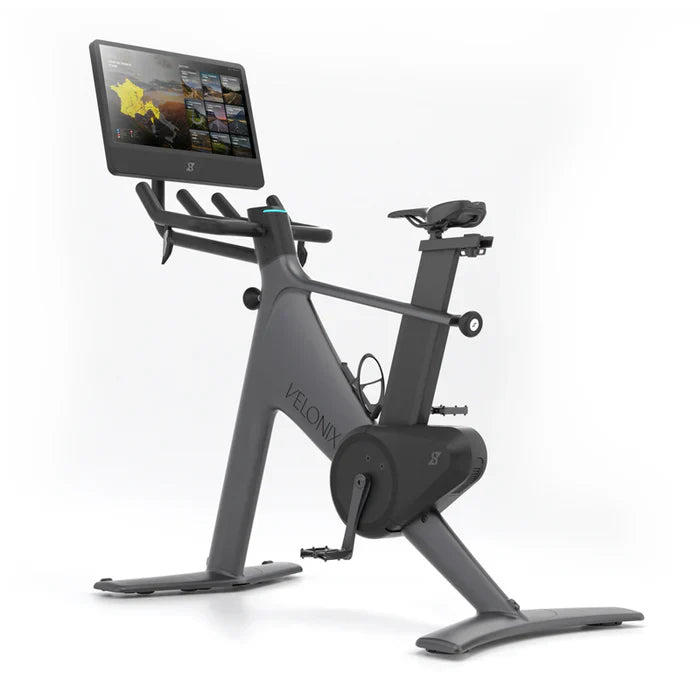

Understanding Muscle Fibre Types
Every movement you make, from sprinting to holding a yoga pose, is powered by different types of muscle fibres. These fibres fall into two main categories: fast-twitch and slow-twitch, each with its strengths and weaknesses.
Whether you're training for explosive power or endurance, knowing how these fibres work can help you design the perfect workout plan.
What Are Slow-Twitch Muscle Fibres?
Slow-twitch muscle fibres, also known as Type I fibres, are built for endurance. They are packed with mitochondria (the energy powerhouses of the cell) and rely primarily on aerobic metabolism to produce energy. This makes them ideal for activities that require sustained effort over long periods.
Characteristics of Slow-Twitch Fibres
-
High oxygen efficiency
-
Slow to fatigue, making them perfect for endurance training
-
Low force output compared to fast-twitch fibres
-
More efficient in burning fat as an energy source
Best Exercises for Slow-Twitch Muscle Development
If your goal is stamina and endurance, focusing on slow-twitch muscle activation is key. Here are some effective training methods:
-
Long-Distance Running or Cycling – Activities like marathons and triathlons heavily recruit slow-twitch fibres.
-
Steady-State Cardio – A heart rate at 60-70% of your max ensures slow-twitch activation.
-
High-Rep, Low-Weight Strength Training – Performing 15-25 reps with moderate weight encourages endurance adaptations.
-
Bodyweight Exercises – Movements like planks, yoga, and Pilates engage slow-twitch fibres for stability and control.
Using equipment like the Speediance Velonix can help you optimise endurance training by providing a versatile resistance system for controlled, low-intensity workouts.
What Are Fast-Twitch Muscle Fibres?
Fast-twitch fibres, or Type II fibres, are built for power and quick bursts of movement. These fibres use anaerobic metabolism for energy, meaning they don’t rely on oxygen but rather on stored glycogen. There are two types of fast-twitch fibres:
-
Type IIa: A hybrid between endurance and power, these fibres can use both aerobic and anaerobic metabolism.
-
Type IIb: The most powerful fibres, designed for maximum force and speed, but they fatigue quickly.
Characteristics of Fast-Twitch Fibres
-
Generate high force and power
-
Fatigue quickly due to anaerobic energy demands
-
Best suited for short, explosive movements
-
Rely on glycogen stores rather than oxygen for energy
Best Exercises for Fast-Twitch Muscle Development
If you want to build strength and explosiveness, here’s what to focus on:
-
Sprint Training – Short bursts of maximum effort running or cycling recruit fast-twitch fibres.
-
Olympic Lifts (Snatch, Clean & Jerk) – Explosive, compound movements engage Type II fibres.
-
Plyometric Training – Box jumps, jump squats, and clap push-ups improve power output.
-
Heavy Strength Training (1-6 Reps) – Lifting 85-95% of your 1RM with long rest periods ensures maximum recruitment.
For controlled, power-based training, the Speediance Gym Monster 2.0 offers a customisable resistance system, perfect for building explosive strength.
Strength Training Strategies for Balanced Muscle Development
Most people benefit from training both slow-twitch and fast-twitch fibres. Whether you aim to become a better sprinter or enhance your endurance, incorporating a mix of both types of training is crucial.
Periodised Training for Muscle Fibres
A balanced training approach should cycle through endurance, hypertrophy, and strength phases:
-
Endurance Phase (4-6 Weeks) – Focus on higher reps and moderate resistance.
-
Hypertrophy Phase (4-6 Weeks) – Aim for 8-12 reps per set to promote balanced muscle growth.
-
Strength & Power Phase (4-6 Weeks) – Perform low reps (1-6) with heavy loads for maximum power.
By using the Speediance Smart Gym, you can seamlessly switch between low, moderate, and high resistance settings, optimising muscle fibre recruitment throughout your workout cycle.
Training for Your Dominant Muscle Type
Are You Naturally Fast-Twitch or Slow-Twitch Dominant?
Most people have a mix of both fibre types, but genetics determines your dominant muscle type.
-
If you excel in explosive movements, you likely have more fast-twitch fibres.
-
If you perform well in long-duration activities, you likely have more slow-twitch fibres.
How to Test Your Muscle Fibre Dominance
-
1RM Fatigue Test: Perform a squat at 85% of your 1-rep max for as many reps as possible.
-
Less than 5 reps: Fast-twitch dominant
-
More than 8 reps: Slow-twitch dominant
-
Sprinting vs Distance Test: Do you fatigue quickly in a sprint, or do you feel stronger in long-distance runs?
-
Explosive speed = fast-twitch
-
Long-lasting endurance = slow-twitch
Once you identify your dominant fibre type, you can fine-tune your workouts to get better results.
How Nutrition Supports Muscle Fibre Growth
Fueling Slow-Twitch Fibres
-
Carbohydrates & Healthy Fats: These provide long-lasting energy for endurance training.
-
Hydration: Electrolytes help maintain performance over long durations.
-
BCAAs & Protein: Maintain lean muscle mass without excessive breakdown.
Fueling Fast-Twitch Fibres
-
High-Protein Diet: Supports muscle recovery and growth.
-
Creatine Supplementation: Improves power output and short-burst performance.
-
Carb loading: ensures that glycogen stores are optimised before high-intensity sessions.
Maximising Performance with the Right Equipment
Investing in the right training tools can significantly impact how effectively you develop fast-twitch and slow-twitch muscle fibres.
Must-Have Training Accessories
-
Squat Belt – Provides lower back support during heavy lifts.
-
Smart Bluetooth Ring Controller – Provides seamless control of your Speediance Smart Gym system, allowing easy adjustments during workouts.
-
Rowing Bench – Great for both endurance and strength training.
-
Adjustable Bench – Essential for various strength and hypertrophy exercises.
-
Storage Rack – Keep your home gym organised and efficient.
For expert guidance on choosing the right fitness equipment, contact Speediance NZ and get personalised recommendations.
Final Thoughts
Understanding fast-twitch vs. slow-twitch muscle fibres is key to optimising strength, endurance, and overall fitness. Whether you’re looking to build explosive power or increase stamina, a well-structured training plan can help you train smarter and achieve better results.
Ready to take your workouts to the next level? Explore the Speediance Smart Gym and start training with precision and efficiency today!
